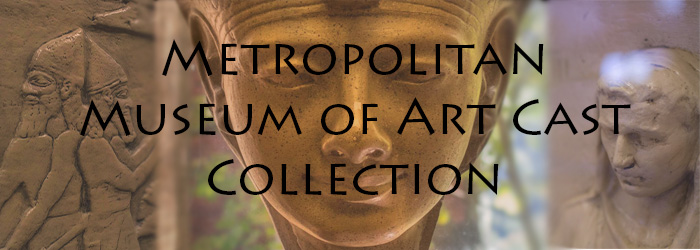

Relief from the Tomb of Mereruka: Milking Scene
Description
Plaster cast of a portion of a relief panel from the Tomb of Mereruka. Site of origin is the Tomb of Mereruka, Saqqara necropolis, Memphis, Egypt, circa 2345-2181 BCE (Old Kingdom, Dynasty VI).
Publication Date
1978
Type of Artwork
Relief
Time Period/Geographical Region
Ancient Egypt
Height (cm/in)
34.29 cm / 13.5 in
Width (cm/in)
96.52 cm / 38 in
Depth (cm/in)
7.62 cm / 3 in
Disciplines
Ancient History, Greek and Roman through Late Antiquity | Sculpture
Recommended Citation
Morehead State University. Camden-Carroll Library., "Relief from the Tomb of Mereruka: Milking Scene" (1978). Metropolitan Museum of Art Cast Collection. 39.
https://scholarworks.moreheadstate.edu/metropolitan_art_collection/39
Files


Comments
At the left, a figure milks a cow while her calf stands nearby. This common practice in ancient Egypt was believed to cause the cow to produce more milk. The cow's rear legs are tethered together, so as not to kick the man squatting beneath it. At the right of the relief, a figure seems to be gathering plants for the animals to eat. Scenes of daily life, especially scenes of sustenance–hunting, fishing, animal husbandry, etc– were often depicted in tombs as a way to ensure that the deceased would have the comforts of the living world in the afterlife. Mereruka, the man for whom the tomb is named, was son-in-law to the Pharaoh Teti, and enjoyed a life of luxury, much of which is depicted on the walls of his burial complex.